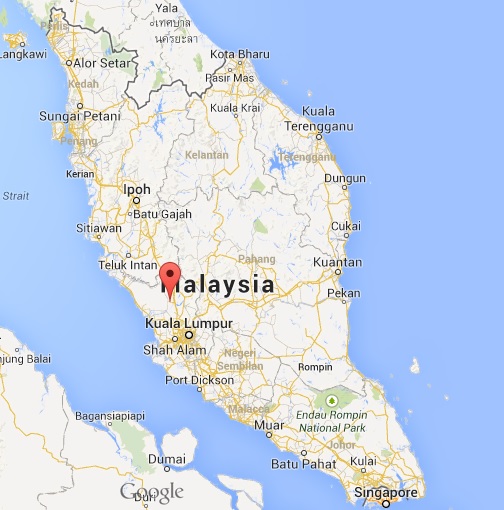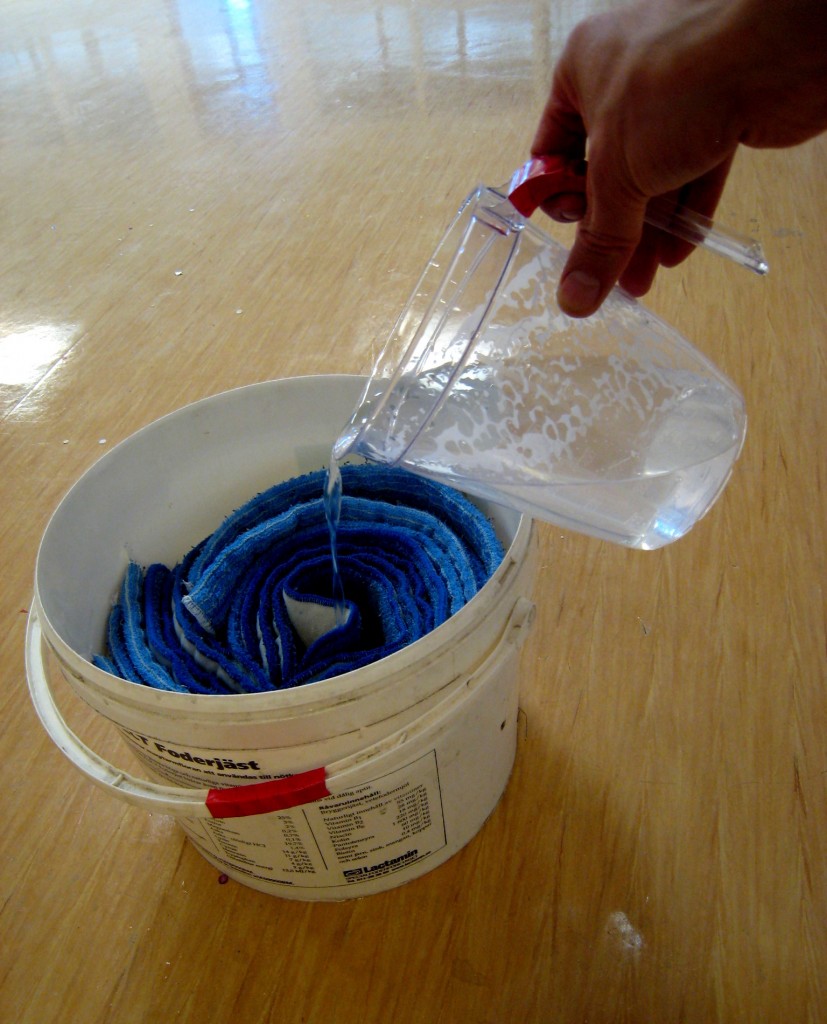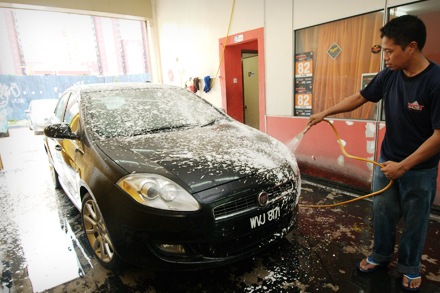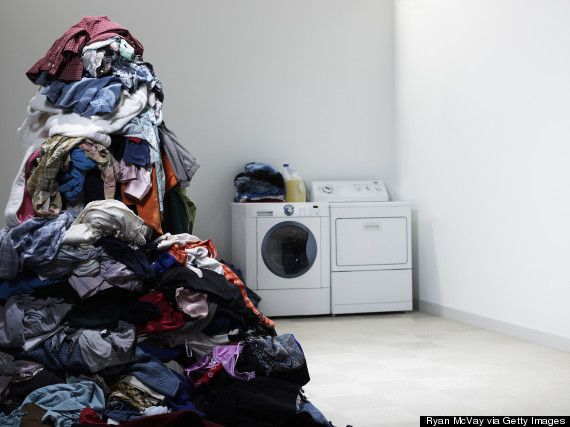As Selangor Dam level drops, Malaysia begins water rationing

- 126Shares
- Facebook119
- WhatsApp2
It’s been 168 days – and counting – since the start of the Selangor Water Saga on 25th February, and we’re still not seeing a light at the end of the tunnel. Although the issue, by now, is as dry as British comedy, the question that drowns our thoughts is WHY? Why are the water levels in our dams dropping more quickly than the beats by Dr. Dre? Why is it not increasing, or at the very least, retaining? And water we doing to solve it?
As of now, we’re still waiting on the folks “up there” to make their decision on the next rationing exercise – is it on? is it off? (yeah, we’re so holding our breath). For Selangorians, who’ve just come out of the three-month-long, worst water rationing since 1998, there isn’t a dry eye in the house… nothing like another long rationing to dampen our spirits, right?
Most recently, the Sungai Selangor dam’s water level was recorded at 32.48% (5 August) compared to 32.74% the day before – that’s a 0.26% drop in ONE day alone. At this rate, the 30% critical level is not a tidak-apa, close-one-eye, lifetime away.

If the water rationing goes ahead, these nine restrictions will be put in place, according to The Star:
- Plant-watering banned, unless by bucket or flower can.
- Car-washing banned, unless by bucket.
- Adding water to recreational ponds/fountains stopped, unless they contain aquaculture.
- Adding water to swimming pools stopped.
- Water tankers cannot be filled without prior approval from water operators. Domestic use, fire-fighting, safety, agricultural needs and etc are exempted.
- Hard surfaces (roads and sidewalks) cannot be cleaned with water.
- Entry and exit points at construction sites cannot be cleaned with water.
- Plant nurseries only to be watered by hoses with trigger nozzles during selected times.
- Roof sprinklers banned.

So, here are four causes of decreasing water levels in our dams explored…
1. Paip bocor
Hahaha! Whose pipe? Oh ours. *shamefaced*
Cracks in our water pipes are appearing – as are the cracks in water management (or should we say, mismanagement). Every six minutes(!), Syabas detects a new leak in its water distribution network. Its CEO, Datuk Ruslan Hassan, confirmed that they found 5,357 bursts and 84,640 leaks in its 26,000km pipe network between Nov 2012 and Oct 2013.

“Many of the bursts and leaks were due to very old pipes, which are structurally weak, and burst under pressure or due to external loads,” declared Datuk Ruslan. He also admitted that this was due to poor workmanship or materials, or not following proper standards (you say wan ar…). Aside from short lifespans, the pipes are further stressed by vibrations from heavy vehicles on the roads above, according to Association of Water and Energy Research Malaysia (AWER) President, S. Piarapakaran.
In the Pudu sinkhole incident, which sent Netizens ROLF-ing away at the tide of hilarious memes, the suspect line-up was long – it was Godzilla, it was Ultraman, it was King Kong! But actually leh, the truth was boring, as it often is… it was soil erosion caused by a burst Syabas water pipe. Boo, we want our money back!

So like we said, the pipes aren’t the only ones leaky… claims of poor management have been floating around for the longest time…
Retired water engineer, A. Somnath (who has more than 45 years of experience in the planning, construction, operations and maintenance of water supply), believes that the problem lies in poor distribution. “I have virtually overseen the construction and operation of almost 30 WTPs (water treatment plants). This, so far, is the worst management system I’ve ever seen,” he chided. Uncle, could you come out of retirement and teach these schoolboys a lesson, please?

But this isn’t the biggest contributor to our water crisis…
2. Water also can steal?!
Have you heard of water theft? 3… 2… 1… WHAAAAAARRRRRRRT?! Water also can kena stolen?!
Yes, can. In fact, “water theft is very rampant. Syabas has lost RM600 million to theft since the start of this year,” Priscilla Alfred, Corporate Comm and Public Affairs GM at Syabas told CILISOS. “We wouldn’t say that it contributes to the water crisis, but rather towards non-revenue water – which is wastage,” she continued.

Wahlaoeh, RM600 million?! Can buy 1,800,000,000 pieces of pisang goreng widdat! Come, let’s form a jiwang rock band and sing angsty songs to the depravity of water wastage.
An example of a water theft raid is detailed in The Sun – “RM109,000 worth of water siphoned off”, screams the headline, followed by the story of SPAN and Syabas’ raid on the Shah Alam construction site. There was no evidence of any bill issued for the site and a chlorine test proved that the water belonged to Syabas.
RM109,000! And that’s just one case… Imagine, RM109,000 x Rampant = ????????

Then after the damage has been done, those water leeches have a lovely paper fine to frame up and hang, because – “any individual or parties found to be siphoning water illegally are committing an offence under Section 123 (1) of the Water Services Industry Act (WSIA), which carries a maximum penalty of RM100,000 or imprisonment of one year, or both,” explained Syabas Projects and Non-revenue Water Executive Director, Yusof Badawi.
Maybe one of the ways we can combat water wastage is to start charging for it. See how precious princess people will start treating it if they actually have to pay for it. Ish, Malaysians – have to motivate with $$$.
Still, not there yet…
3. Rain! Why you no fall in catchment areas?
Even Mother Nature is not on our side as raindrops fall anywhere but into the water catchments. Despite sporadic hujan, Azhar Ishak from the Meteorological Department confirmed that no one will be sighing with relief as there has been no increase of water levels in Selangor dams. Dam!

“The rain is not falling into the water catchments because they’re such a small target area in the first place,” Saw Bun Liong, also from the Met Dept, told CILISOS. “And at the moment there are not many clouds due to the dry Southwest Monsoon,” he added, explaining that this sets back their cloud seeding efforts. Bun Liong even assured us that this year’s Southwest Monsoon season was not particularly any drier than previous years. So clearly there’s a deeper problem to our water woes, hmmm.

If we compare the location of the Sungai Selangor dam from this map image (above) to the distribution of rainfall in the image (below), we can conclude that the entire state of Selangor itself isn’t blessed with as much rainfall as other states.

As our options begin to dry up fast, Selangor turns to Pahang for aid. Construction of the RM3.9 million Pahang-Selangor Raw Water Transfer Project is already 96% complete, reported NTV7, and they are planning the ribbon-cutting ceremony for December. It will supply 1.89 billion litres of water per day to meet our needs until 2025, calculates Energy, Water and Green Technology Minister, Datuk Seri Dr Maximus Ongkili. Here’s hoping our fellas can count higher than up to potato.

In the meantime, State Exco, Elizabeth Wong announced that Selangor borrowed “royal rainmaking” technology from our Thai neighbours. Through a special method called “Super Sandwich” – (with 80% effective results… get yours today!) – the process will hopefully trigger cloud formation in designated areas and stimulate rainfall. Long live “Super Sandwich” and may the clouds aim better than men in toilets. Cheers!
Which leaves us with…
4. Development – roads, buildings, even people!
Aaaand we have our WINNER, ladies and gentlemen! In the glorious march towards progress and Wawasan 2020, Selangor is caught up in a flurry of developments – here korek, there korek… Therefore the excessive activity is irri-irri-irri-irritating the SHITake mushrooms out of our forests, our braders at the Peninsular Malaysia Forestry Department berated. Basically, we’re tripping up the hydrological cycle of water catchment areas, explained Director-General, Datuk Dr Abdul Rahman Abdul Rahim. In digestible terms, PMS la tu!
Other environmental experts likewise have sounded us, warning that unless water catchments are protected, they are in danger of drying up like old ah-mas, and the sorry, little 10m buffer zones, separating unspoiled Mother Nature from evil, evil corporate developments, aren’t doing the forests any favours.

In particular, signs are pointing towards the development of the East Klang Valley Expressway (EKVE), which is going to leave four forest reserves in Taman Warisan Negeri Selangor VERY disturbed! “It will remove 106.65ha of forest along with its attending ecosystem services. There will be a loss of 19 million litres of portable water a day, now being supplied to about 9,225 households in the Ampang area,” Klang MP, Charles Santiago, specified.

Similarly, the MRT project has taken the blame, when early in February, a 900mm Syabas water pipe burst amidst construction of the transit system along Persiaran Surian, Mutiara Damansara. “MRT Corp apologises for the incident and for the inconvenience caused. All efforts are being taken at this moment to ensure that the situation returns to normal as quickly as possible,” an MRT Corp spokesman reportedly said.
We like how land development actually ties in with the paip bocor factor – in fact, that it actually caused the bocor-ed pipe. Hyuk!
Oh and don’t forget that infrastructure is not the only thing that’s developing – the huuuuman population is growing too! Originally, the National Physical Plan (approved in 2005), predicted that Negeri Sembilan was expected to face water shortage by 2010, Penang and Melaka by 2020, then Selangor and Perlis by 2050. These predictions were based on the carrying capacity (a.k.a. growth limit) for townships, and water supply was supposed to be sufficient for that carrying capacity.

The townships in PJ had a carrying capacity of 250,000 at the time. Then 2013 rolled along and PJ reached a population of 600,000, more than double the planned carrying capacity – summary… Demand > Supply. Ooops, we did it again.
So there you have it, it is indeed human fault to the greater extent rather than nature’s… heh… hehe… heh. Now, who better to clean up our mess, than us?
.
This is the rakyat speaking, how may we help you?
You might think, I’m one person, how much of a difference can I make? Hoi, if everybody thinks like that then we all might as well tutup kedai, go lie under a rock together and wait to die. Jom, let’s all reduce, reuse, recycle water and be amazed at how much H2O we can save at the end of the day!
1. Turn that tap off
Common sense jugak will tell you to turn the tap off while you are soaping your hands or brushing your teeth. Turn it back on only when you’re ready to rinse. Apply the same concept in the kitchen when you are washing dishes and you will be a friend to the environment.

2. Maximise laundry
Save dirty clothes until you have a nice big pile before doing the laundry to conserve water. If your clothes are clean, hang them up for another day, especially pyjamas. These days with air-conditioning you stand a pretty good chance of not grossly sweating into your clothes. If you claim got sweating condition and doctor’s letter then you win lor :-s
3. Reuse waste water
Collect waste water from your bath, bubbles and all, so that you can reuse it for mopping floors or wiping windows or washing toilets and cars. Captain Planet would be proud!

4. Low-flow is eco
We even found advice that’s proooobably not going to hit it off big with everyone. One user rhymes it this way: “If it’s yellow, let it mellow. If it’s brown, flush it down”. What she’s really trying to say, is that…………….. tchh…. tchhhhhhhhhh. Sorry, please try again never!
Alternatively, use the low flush if it’s just pee, since these days most porcelain thrones in public and even in some homes have dual flushes. In fact if your low flush pressure is strong enough, you can even use it for Number 2 – hey, there are no rules here.
And why limit conservation habits to the toilet? If your washing machine koyak adi, time to replace it with one of those high efficiency machines that save water and energy. To the home appliance dopes among you, fret not. Just approach shop staff (usually they’re the ones in uniform), tell them you’re a Planeteer and show them your ring and ask for help.

5. Check plumbing for leaks
It’s good practice to routinely check your plumbing. To know if there are any in the supply pipe, turn off the stop tap inside your property. If the metre continues running then go to Syabas and make some noise. Next, check your indoor plumbing – turn the stop tap back on, but every other tap in the house off. If the metre still runs then call a plumber and make some noise.

6. Ease up on car wash
Actually this one’s kinda mandatory now because the state has just decreed that all car wash centres can only operate six hours a day and all illegal ones be shut down (wait, it takes the water crisis excuse to start cracking down on illegits?). So it’s time to make each wash last, guys. You know what you can do? Park in sheltered lots (i.e. avoid parking under trees with lots of birds) and clean only the windshield and mirrors. Aiya, windshield and mirrors clean boleh pass la.

7. Catch water thieves
If you dream of being the resident Batman, doing something heroic, maybe even getting your picture in the newspaper, then watch out for any rogue pipe connections around the neighbourhood, coz the appearance of an unfamiliar pipe could mean someone is tapping water. Or everyone just be responsible to check your own premises, so that the police hotline won’t be ringing off the hook with reports of creepy neighbour stalkers.

Progress is a great thing, no doubt, and as we urbanise our state, Selangorians need to become a responsible rakyat. If we work alongside the authorities, playing our part in individual homes, our combined efforts would be better than if we just left it to “someone else” to solve the problem. Sure, it may not come easy at first, but if you consciously practice good conservation habits, you’ll soon take to it like a duck to water.
Selangor Water Saga, coming to cinemas near you. Watch the trailer here.
…Psyche!
- 126Shares
- Facebook119
- WhatsApp2




